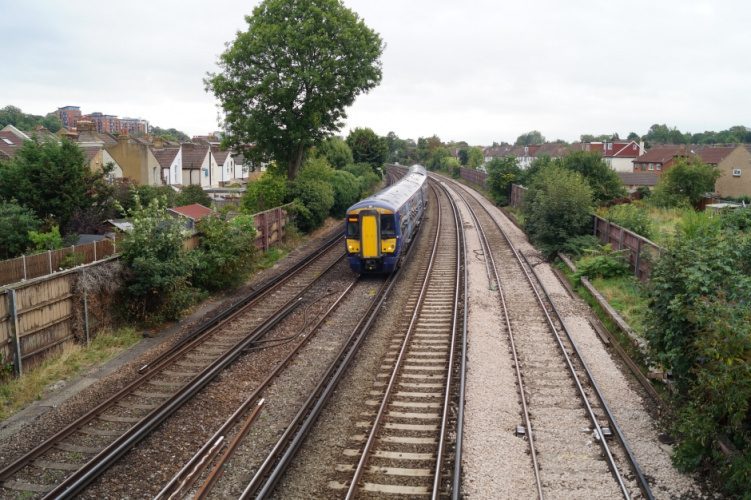
In light of this, The Engineer asked some of the leading academics in the field about the state of the nation’s infrastructure and what steps should be taken to mitigate against the changing climate.
How would you assess the overall state of the UK's built infrastructure?

Professor Roderick Smith, Imperial College London and Formerly Chief Scientific Advisor to the Department for Transport and Past President of the Institution of Mechanical Engineers: Generally speaking, the overall state of our built infrastructure is good, but less than excellent, although many issues have emerged in the last few years which give cause for longer-term concern .
The situation differs for various types of infrastructure. Much of our railway system was built in the mid-Victorian era and it has been comparatively neglected since. Although we are now engaged in a massive programme of refurbishment, the costs are enormous and disruption to traffic considerable.
On the other hand, our motorways have been built since the late 1950s and although only one per cent of the network they carry 21 per cent of the traffic. Again, improvements are taking place to increase capacity, allied to resurfacing caused by a combination of weight of traffic and weather, but the process itself is creating delays.
Our civil airports have been created since 1945 since when usage has increased and continues to increase exponentially causing the capacity crisis well illustrated by the issues surrounding the expansion of Heathrow.
Our water supply system is largely Victorian, leaks from dam to tap are large and wasteful, vigilance on dam safety has recently been brought into sharp focus.

Dr Mohammad Heidarzadeh, Assistant Professor, Head of Coastal Engineering and Resilience LAB (CERLAB), Department of Civil & Environmental Engineering, Brunel University London: I think overall the status looks good. Obviously, a detailed assessment is not possible for an individual like me because it needs systematic data from various sectors over a long period of time. In general, my feeling is that the status is satisfactory. This is because I don’t see systematic failures of infrastructure. But this is for today; the situation could be different a few days later if we do not take appropriate steps to improve them.
Are existing maintenance and inspection regimes sufficient?

Dr Helen Gavin, Knowledge Exchange Researcher and Programme Manager, Oxford Martin Programme on Integrating Renewable Energy: Existing maintenance and inspection regimes were suitable for the conditions in which they were created. But now we have unprecedented weather in the form of extreme storms and climate events putting much more stress upon built infrastructure assets. This is in addition to increased demands on assets, arising from higher levels of usage.
Therefore, it is prudent to check the frequency and extent of inspections, changing them where necessary, to pick up early signs of stress and deterioration given the conditions that are now being experienced.
MH: This depends on sector and type of infrastructure. Some need more frequent inspections like transport and water infrastructure, and some, like residential structures, do not need frequent inspections.
RS: Much of our infrastructure is being used more heavily as demand increases. The combination of ageing and increasing use means that maintenance and inspection intervals need to be shortened appropriately.
Unfortunately, these are the very activities which come under pressure as finances tighten. There is a real temptation for companies to delay in order to improve their immediate financial results. Regulation is only working up to a point.
Are parts of the infrastructure network more exposed than others to a warming climate?
MH: Yes, I think so. For example, power substations or transport infrastructures which are close to the sea could be affected by the recent increased number of storm surges and waves and associated flooding.
RS: There have been many such examples of failures due to extreme weather events that comment seems superfluous. Examples in recent months include power line failures on the railway (high temperatures), crisis at a dam (too much rainfall, too quickly), ancient bridges swept away by floods (again localised heavy rain), properties previously thought safe have been flooded, strong winds have caused problems on roads and bridges.
Furthermore, our lives are increasingly dominated by information technology which is in turn entirely dependent on a stable reliable supply of electricity. The potential for civil unrest if these systems fail should not be underestimated. It should be a threat, allied to terrorist disruption, which should be near the top of our national risk register.
HG: Those parts of the infrastructure network that are directly exposed to temperature fluctuations (such as railway lines, paved areas) and those that deal with the conduit of storm water (e.g. road drainage systems, combined sewer overflows) are particularly susceptible as they are the equivalent of ‘first responders’ with respect to experiencing changed climate conditions.
Existing infrastructure will have been designed and sized to cope with lower temperatures and volumes, prevalent at the time of their planning. As such extreme changes in temperature (both high temperatures, and rapid fluctuations (such as the ‘Beast from the East’ event where temperature increase sharply overnight), plus storm events (e.g. 1 month’s rainfall in 1 day) will have significant impacts, as the system struggles to cope.
Chinook helicopter joins Whaley Bridge dam operation
Do we need to reassess our approach to infrastructure in anticipation of more extreme weather?
MH: Definitely, yes. We see tangible increases in the number and intensity of natural hazards such as mass fires, storms and flooding. Our infrastructure is now under much bigger pressure from the changing environment. I believe that we need a new approach to, first, update the inspection guidelines, second, re-assess the design of infrastructure and improve their load bearing capacities if needed, and third, to increase their resilience to combined multi-hazards.
I think, otherwise, we may be facing more frequent infrastructure failures. As an example, are the spillway capacities of our dams enough in the face of global warming or not? Re-assess the capacity and if it’s not enough, increase it by adding another spillway. As another example, is our rail infrastructure resilient to an extreme hot day combined with a bank holiday?
HG: Yes. Further, we need to consider all aspects of the infrastructure lifecycle, and ensure existing assets are adapted to cope with existing changed weather patterns and predicted further extreme conditions. New systems must be designed to be resilient to extremes of temperature and rainfall.
It is always more cost-effective to plan to be resilient than to deal with the consequences of failing infrastructure.
RS: It is timely to review all aspects of our infrastructure and to think out-of-the box about the knock-on consequences of climate change. It is unfortunate that the time scale of climate change is longer than the short-term pressures generated by the need for immediate positive financial results and a 24-hour news media obsessed by personality.
Our leaders are mainly drawn from the chattering classes devoid of any semblance of technical knowledge. It is vital that engineers lose no opportunity to educate and influence the political class about the future dangers that so far, they have failed to appreciate.




Glasgow trial explores AR cues for autonomous road safety
They've ploughed into a few vulnerable road users in the past. Making that less likely will make it spectacularly easy to stop the traffic for...